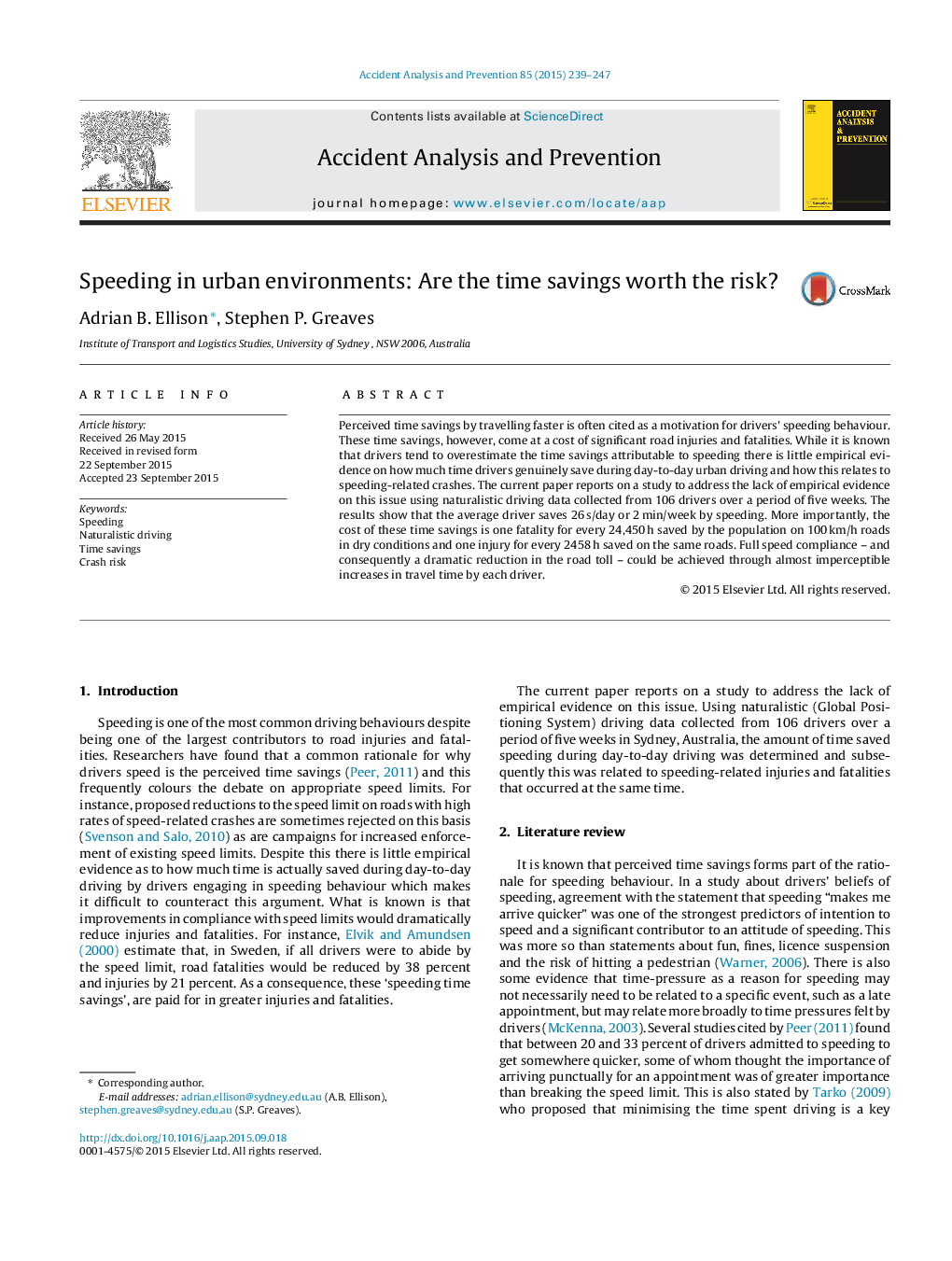| Article ID | Journal | Published Year | Pages | File Type |
|---|---|---|---|---|
| 572140 | Accident Analysis & Prevention | 2015 | 9 Pages |
•Perceived time savings is often cited as a motivation for speeding.•Study uses naturalistic driving data to empirically test time savings from speeding.•Results show the average driver saves 26 s/day or 2 min/week.•The minor time savings from speeding are ‘paid’ for with greater road casualties.•On 100 km/h roads, one fatality occurs for every 24,450 h saved by the population.
Perceived time savings by travelling faster is often cited as a motivation for drivers’ speeding behaviour. These time savings, however, come at a cost of significant road injuries and fatalities. While it is known that drivers tend to overestimate the time savings attributable to speeding there is little empirical evidence on how much time drivers genuinely save during day-to-day urban driving and how this relates to speeding-related crashes. The current paper reports on a study to address the lack of empirical evidence on this issue using naturalistic driving data collected from 106 drivers over a period of five weeks. The results show that the average driver saves 26 s/day or 2 min/week by speeding. More importantly, the cost of these time savings is one fatality for every 24,450 h saved by the population on 100 km/h roads in dry conditions and one injury for every 2458 h saved on the same roads. Full speed compliance – and consequently a dramatic reduction in the road toll – could be achieved through almost imperceptible increases in travel time by each driver.
